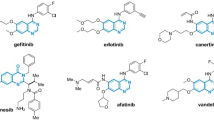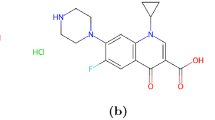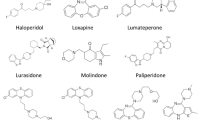Abstract
Graph theory serves as a powerful mathematical framework for modeling complex systems, including the chemical structures of pharmaceutical compounds. This study employs degree-based topological indices to analyze the chemical structures of 12 commonly prescribed antibiotics for treating kidney infections. These indices represent numerical values derived from a graph, allowing for the prediction of the physicochemical properties of compounds without the need for laboratory experiments. A computer-based technique and algorithm were employed to streamline calculations and data analysis. The degree-based topological indices were calculated using the MATLAB program. A comparison of their topological indices was conducted to predict the physicochemical characteristics of the selected drugs. Additionally, SPSS software was utilized to develop Quantitative Structure–Property Relationship (QSPR) models, which analyze the correlation between topological indicators and the drugs' physicochemical properties. Various regression models were applied to evaluate the effectiveness of the drugs. Effective predictors were identified, and optimal equations were established based on the highest correlation coefficients and Fisher's test. The study found that the power equation is the most effective method for estimating molar refraction (MR) and polarizability (P) using the Randic ( \({R}_{-1/2}\)) index. Conversely, the cubic equation proved the most reliable technique for estimating (MR) and (P) using the second modified Zagreb (\({}^{m}{M}_{2}\)) and atomic bond connectivity (ABC) indices. The findings highlight the potential of using degree-based topological indices in predicting the physicochemical characteristics of drugs. Identifying effective predictors and optimal equations contributes to understanding the relationship between chemical structure and properties, paving the way for further research in drug design and development.








Similar content being viewed by others
Explore related subjects
Discover the latest articles and news from researchers in related subjects, suggested using machine learning.Data availability
The data that support the findings of this study are openly available in ChemSpider at [ http://www.chemspider.com/AboutUs.aspx], reference number [64].
References
https://www.drugs.com/condition/pyelonephritis.html, https://www.drugs.com/condition/pyelonephritis.html
Aksoy SG, Bruillard P, Young SJ, Raugas M (2021) Ramanujan graphs and the spectral gap of supercomputing topologies. J Supercomput 77(2):1177–1213. https://doi.org/10.1007/s11227-020-03291-1
Mondal S, Das KC (2023) Degree-based graph entropy in structure-property modeling. Entropy 25:109
Kier LB, Hall LH (1976) Molecular connectivity in chemistry and drug research. Academic Press Inc, New York
Consonni V, Ballabio D, Todeschini R (2009) Comments on the definition of the Q 2 parameter for QSAR validation. J Chem Inf Model 49:1669–1678
Ganie HA, Pirzada S (2024) On the first outdegree Zagreb index of a digraph. Discrete Math. https://doi.org/10.1016/j.disc.2023.113726
Liu M, Pang S, Belardo F, Ali A (2023) The k-apex trees with minimum augmented Zagreb index. Discrete Math 346:7. https://doi.org/10.1016/j.disc.2023.113390
Bermudo S (2023) Upper bound for the geometric-arithmetic index of trees with given domination number. Discrete Math 346:1. https://doi.org/10.1016/j.disc.2022.113172
Parveen S, Awan NUH, Mohammed M, Farooq FB, Iqbal N (2022) Topological indices of novel drugs used in diabetes treatment and their QSPR modeling. J Math 20:22
Hosamani SM, Perigidad D, Jamagoud S, Maled Y, Gavade S (2017) QSPR anlysis of certaindegree based topological indices. J Appl Probab 62:361–371
Wang L, Xing P, Wang C, Zhou X, Dai Z, Bai L (2019) Maximal information coefficient and support vector regression based nonlinear feature selection and QSAR modeling on toxicity of alcohol compounds to tadpoles of rana temporaria. J Braz Chem Soc 30(2):279–285. https://doi.org/10.21577/0103-5053.20180176
Kirmani SAK, Ali P, Azam F (2021) Topological indices and QSPR/QSAR analysis of some antiviral drugs being investigated for the treatment of COVID-19 patients. Int J Quantum Chem 121:9. https://doi.org/10.1002/qua.26594
Li Y, Aslam A, Saeed S, Zhang G, Kanwal S (2022) Targeting highly resisted anticancer drugs through topological descriptors using VIKOR multi-criteria decision analysis. Eur Phys J Plus 137:11. https://doi.org/10.1140/epjp/s13360-022-03469-x
Hayat S (2023) Distance-based graphical indices for predicting thermodynamic properties of benzenoid hydrocarbons with applications. Comput Mater Sci 23:520. https://doi.org/10.1016/j.commatsci.2023.112492
Statistical significance of valency-based topological descriptors for correlating thermodynamic properties of benzenoid hydrocarbons with appli- cations
Kansal N, Garg P, Singh O (2023) Temperature-based topological indices and QSPR analysis of COVID-19 drugs. Polycycl Aromat Compd 43(5):4148–4169. https://doi.org/10.1080/10406638.2022.2086271
Mondal S, De N, Pal A (2022) Topological indices of some chemical structures applied for the treatment of COVID-19 patients. Polycycl Aromat Compd 42(4):1220–1234. https://doi.org/10.1080/10406638.2020.1770306
Mondal S, Das KC, Huh DY (2024) The minimal chemical tree for the difference between geometric–arithmetic and Randić indices. Int J Quantum Chem 124:1. https://doi.org/10.1002/qua.27336
Ravi V (2024) QSPR analysis of drugs used for treatment of hepatitis via reduced reverse degree-based topological descriptors. Phys Scr 99:10. https://doi.org/10.1088/1402-4896/ad729d
Khan AR, Mutlib A, Campeña FJH, Tchier F, Karim M, Hussain S (2024) Investigation of reduced reverse degree based polynomials & indices of gold crystals. Phys Scr 99:7. https://doi.org/10.1088/1402-4896/ad5648
Ullah A, Jamal M, Zaman S, Shamsudin J (2024) Connection based novel AL topological descriptors and structural property of the zinc oxide metal organic frameworks. Phys Scr 99:5. https://doi.org/10.1088/1402-4896/ad350c
Hayat S, Alanazi SJF, Liu JB (2024) Two novel temperature-based topological indices with strong potential to predict physicochemical properties of polycyclic aromatic hydrocarbons with applications to silicon carbide nanotubes. Phys Scr 99:5. https://doi.org/10.1088/1402-4896/ad3ada
Ullah A, Bano Z, Zaman S (2024) Computational aspects of two important biochemical networks with respect to some novel molecular descriptors. J Biomol Struct Dyn 42(2):791–805. https://doi.org/10.1080/07391102.2023.2195944
Ullah A, Jabeen S, Zaman S, Hamraz A, Meherban S (2024) Predictive potential of K-Banhatti and Zagreb type molecular descriptors in structure–property relationship analysis of some novel drug molecules. J Chin Chem Soc 71(3):250–276. https://doi.org/10.1002/jccs.202300450
Farooq ATB (2022) Topological indices of novel drugs used in cardiovascular disease treatment and its QSPR modeling. J Chem 22:9749575
Sultana S (2023) Chemical application of topological indices in infertility treatment drugs and QSPR analysis. Int J Anal Chem 2:23. https://doi.org/10.1155/2023/6928167
Awan NH, Ghaffar A, Tawfiq FM, Mustafa G, Bilal M, Inc M (2024) QSPR analysis for physiochemical properties of new potential antimalarial compounds involving topological indices. Int J Quantum Chem 124:11. https://doi.org/10.1002/qua.27391
Hasani M, Ghods M (2023) M-polynomials and topological indices of porphyrin-cored dendrimers. Chem Methodol 7:288–306. https://doi.org/10.22034/CHEMM.2022.370497.1626
Hasani M, Ghods M (2023) Predicting the physicochemical properties of drugs for the treatment of Parkinson’s disease using topological indices and MATLAB programming. Mol Phys. https://doi.org/10.1080/00268976.2023.2270082
Hasani M, Ghods M (2024) Topological indices and QSPR analysis of some chemical structures applied for the treatment of heart patients. Int J Quantum Chem 124:1. https://doi.org/10.1002/qua.27234
Hasani M, Ghods M et al (2024) QSPR analysis of kidney infection (Pyelonephritis) drugs by entropy graphs weighted with topological indices, and MATLAB programming. Polycycl Aromat Compd 5:82. https://doi.org/10.1080/10406638.2024.2429638
Hasani M (2024) Investigating fuzzy topological indices of linear and cyclic anthracene hydrocarbon. Fuzzy Optim Model J 5:1–19. https://doi.org/10.71808/fomj.2024.1183654
Shi X, Cai R, Tousi JR, Talebi AA (2024) Quantitative structure-property relationship analysis in molecular graphs of some anticancer drugs with temperature indices approach. Mathematics 12:13. https://doi.org/10.3390/math12131953
Wazzan S, Ahmed H (2024) Advancing computational insights: domination topological indices of polysaccharides using special polynomials and QSPR analysis. Contemp Math 5(1):26–49. https://doi.org/10.37256/cm.5120243419
Mahboob A, Rasheed MW, Hanif I, Amin L, Alameri A (2024) Role of molecular descriptors in quantitative structure-property relationship analysis of kidney cancer therapeutics. Int J Quantum Chem 124:1. https://doi.org/10.1002/qua.27241
Balasubramaniyan D, Chidambaram N (2023) On some neighbourhood degree-based topological indices with QSPR analysis of asthma drugs. Eur Phys J Plus 138:9. https://doi.org/10.1140/epjp/s13360-023-04439-7
Huang R, Mahboob A, Rasheed MW, Alam SM, Siddiqui MK (2023) On molecular modeling and QSPR analysis of lyme disease medicines via topological indices. Eur Phys J Plus 138:3. https://doi.org/10.1140/epjp/s13360-023-03867-9
Hui ZH, Kanwal S, Aslam A, Saeed S, Idrees N (2022) A mathematical investigation for appraisal of crystal structure lattices through eccentricity-based topological invariants, QSPR analysis, and MCDA. Eur Phys J Plus 137:11. https://doi.org/10.1140/epjp/s13360-022-03495-9
Govardhan S, Roy S (2023) Topological analysis of hexagonal and rectangular porous graphene with applications to predicting π -electron energy. Eur Phys J Plus 38:7. https://doi.org/10.1140/epjp/s13360-023-04307-4
Rahul MP, Clement J (2022) Topological characterization and entropy measures of large cavity cycloarene oligomers. Eur Phys J Plus 137:12. https://doi.org/10.1140/epjp/s13360-022-03506-9
Manzoor S, Siddiqui MK, Ahmad S (2021) On physical analysis of degree-based entropy measures for metal–organic superlattices. Eur Phys J Plus 136:3. https://doi.org/10.1140/epjp/s13360-021-01275-5
Chu YM, Imran M, Baig AQ, Akhter S, Siddiqui MK (2020) On M-polynomial-based topological descriptors of chemical crystal structures and their applications. Eur Phys J Plus 135:11. https://doi.org/10.1140/epjp/s13360-020-00893-9
Shanmukha MC, Usha A, Shilpa KC, Basavarajappa NS (2021) M-polynomial and neighborhood M-polynomial methods for topological indices of porous graphene. Eur Phys J Plus 136:10. https://doi.org/10.1140/epjp/s13360-021-02074-8
Shaker H, Javaid S, Babar U, Siddiqui MK, Naseem A (2023) Characterizing superlattice topologies via fifth M-Zagreb polynomials and structural indices. Eur Phys J Plus 138:11. https://doi.org/10.1140/epjp/s13360-023-04645-3
Khalid A, Iqbal S, Siddiqui MK (2024) NM-polynomial-based topological indices and graph entropies of porphyrazine. J Supercomput. https://doi.org/10.1007/s11227-024-06440-y
Jayanna GK (2023) A study of hyaluronic acid-anticancer drug conjugates via new ve-degree topological indices. Lett Appl NanoBioScience 12:4
Gowtham KJ, Narahari N (2023) The study of line graphs of subdivision graphs of some rooted product graphs via K-Banhatti indices. Int J Math Ind 15(1):2350003. https://doi.org/10.1142/S266133522350003X
Jayanna GK (2023) On maximum reverse degree energy of a graph and its chemical applicability. Bull Int Math Virtual Inst 13:1
Gowtham KJ (2024) New vertex-edge sombor, nirmala and misbalance indices. Soc J Appl Eng Math 14(2):597–604
Gowtham KJ, Husin MN, Siddiqui MK (2024) Some new bounds on the modified symmetric division deg index. Malaysian J Math Sci 18(1):39–50. https://doi.org/10.47836/mjms.18.1.03
Masmali GH, Nadeem MF, Mufti ZS, Ahmad A, Koam AN (2024) Data-driven approaches to study the spectral properties of chemical structures. Heliyon 52:96
Mufti TAZS, Tedjani AH, Anjum R (2023) Entropy and multi-fractal analysis in complex fractal systems using graph theory. Axioms 12(12):1126
Liaqat S, Mufti ZS, Shang Y (2024) Newly defined fuzzy Misbalance Prodeg Index with application in multi-criteria decision-making. AIMS Math 9(8):20193–20220. https://doi.org/10.3934/math.2024984
Moussaoui M et al (2023) In silico design of novel CDK2 inhibitors through QSAR, ADMET, molecular docking and molecular dynamics simulation studies. J Biomol Struct Dyn 41(23):13646–13662. https://doi.org/10.1080/07391102.2023.2212304
Moussaoui M et al (2024) QSAR, ADMET, molecular docking, and dynamics studies of 1,2,4-triazine-3(2H)-one derivatives as tubulin inhibitors for breast cancer therapy. Sci Rep 14:1. https://doi.org/10.1038/s41598-024-66877-2
Moussaoui M et al (2024) Design and optimization of quinazoline derivatives as potent EGFR 2 inhibitors for lung cancer treatment: a comprehensive QSAR, 3 ADMET, and molecular modeling investigation. ACS Omega 9(46):45842–45857. https://doi.org/10.1021/acsomega.4c04639
Kerraj S et al (2024) Computational analysis of ligand design for Ru half-sandwich sensitizers in bulk heterojunction (BHJ) solar cells: exploring the role of –NO2 group position and π-conjugation in optimizing efficiency. J Indian Chem Soc 101:5. https://doi.org/10.1016/j.jics.2024.101148
Soufi H et al (2024) Multi-combined QSAR, molecular docking, molecular dynamics simulation, and ADMET of Flavonoid derivatives as potent cholinesterase inhibitors. J Biomol Struct Dyn 42(12):6027–6041. https://doi.org/10.1080/07391102.2023.2238314
Ouachtouk H, Harbi A, Azerblou S, Azouaoui A, Moutaabbid M, Tace E (2024) Synthesis, characterization, magnetic, elastic, and electronic properties of La2ZnMnO6 double perovskite. J Supercond Nov Magn 37:1541–1550. https://doi.org/10.1007/s10948-024-06776-9
Sankarraman SM (2022) A computational approach on acetaminophen drug using degree-based topological indices and m-polynomials. Biointerface Res Appl Chem 12(6):7249–7266. https://doi.org/10.33263/BRIAC126.72497266
Zhou B, Trinajstić N (2010) On general sum-connectivity index. J Math Chem 47(1):210–218. https://doi.org/10.1007/s10910-009-9542-4
GraphPad Statistics, Welch’s t-test using SPSS software. Statistical tutorials and software guides, Retrieved September, 17, 2023, from https://graphpad.ir/Welchs-t-test/.php
Stephanie Glen, ‘RMSE: Root Mean Square Error’ From StatisticsHowTo.com: Elementary Statistics for the rest of us! [Online]. https://www.statisticshowto.com/probability-and-statistics/regression-analysis/rmse-root-mean-square-error/
ChemSpider, Search asd shace chemistry (2021). http://www.chemspider.com/AboutUs.aspx
Table of critial values for Pearson’s r. https://www.radford.edu/~jaspelme/statsbook/Chapterfiles/Table_of_Critical_Values_for_r.pdf
Funding
This research did not receive any specific grant from funding agencies in the public, commercial, or not-for-profit sectors.
Author information
Authors and Affiliations
Contributions
All authors contributed to the study conception and design. Material preparation, data collection and analysis were performed by MH and MG. The first draft of the manuscript was written by MH and all authors commented on previous versions of the manuscript. All authors read and approved the final manuscript.
Corresponding author
Ethics declarations
Competing interests
The authors declare no competing interests.
Additional information
Publisher's Note
Springer Nature remains neutral with regard to jurisdictional claims in published maps and institutional affiliations.
Rights and permissions
Springer Nature or its licensor (e.g. a society or other partner) holds exclusive rights to this article under a publishing agreement with the author(s) or other rightsholder(s); author self-archiving of the accepted manuscript version of this article is solely governed by the terms of such publishing agreement and applicable law.
About this article
Cite this article
Hasani, M., Ghods, M., Mondal, S. et al. Modeling QSPR for pyelonephritis drugs: a topological indices approach using MATLAB. J Supercomput 81, 479 (2025). https://doi.org/10.1007/s11227-025-06967-8
Accepted:
Published:
DOI: https://doi.org/10.1007/s11227-025-06967-8




